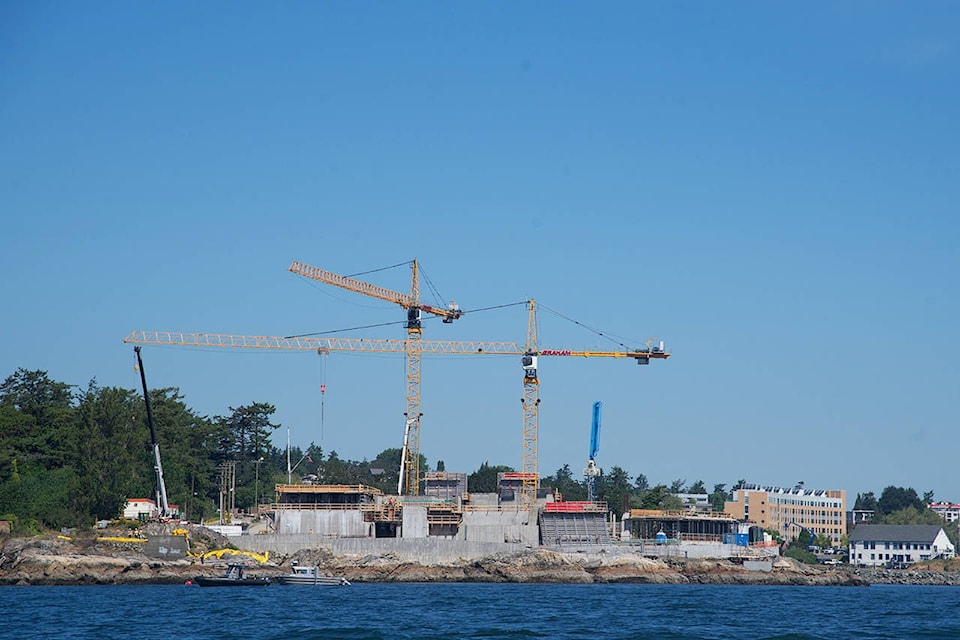The Capital Regional District board plans to apply sewage biosolids to land at Hartland Landfill for a few weeks of the year for use as fertilizer and to cover active areas on the property.
This decision is a partial reversal of one made in 2011, which prohibited the spread of biosolids on land due to concerns about contamination and food production.
A new sewage treatment facility, the McLoughlin Point Wastewater Treatment Plant, is expected to open later this year and leaves the CRD with the dilemma of what to do with 7,000 tonnes of Class A biosolids expected as a by-product of wastewater treatment.
The plan is to ship most of the sewage biosolids to the Lower Mainland to be used as fuel at cement plants but when the plants shut down for about one month out of the year, the CRD decided to apply them on land at Hartland Landfill. The board came up with this solution under pressure from the BC Ministry of the Environment, which only approved the plan to use biosolids as fuel for cement kilns under the condition that an alternate plan is presented for the few weeks the kilns shut down.
READ ALSO: CRD plans to use processed human feces from new wastewater treatment plant as fuel, fertilizer
The CRD cannot store the biosolids because there is not enough room on the landfill to store one month’s worth. If the CRD does not come up with a plan for the month’s worth of biosolids suited to the province, it could risk losing money for the sewage treatment project – a concern highlighted by CRD board chair Colin Plant.
“I am not willing, on behalf of the corporation, to risk any of the funding for this sewage project,” Plant said at the meeting. “This is not the first land application in the province … this is a short-term five to six-week solution.”
Plant noted CRD staff have said land application is not dangerous and that he is “choosing to trust” staff.
Saanich Coun. Rebecca Mersereau also supported the recommendation as a short-term solution. She said she sees it as the only option.
“It’s not something I relish,” Mersereau said. “I see it as our only option given the very direct response we received from the minister of environment … I think this is what we have to do in order to protect the CRD’s broader interest.”
Others at the meeting opposed the recommendation, suggesting other avenues besides land application.
READ ALSO: Capital Regional District plans to send dried sewage waste to mainland for use as fuel
Mike Hicks, director for the Juan de Fuca Electoral Area, said his constituents in the Willis Point area are “unanimously against” land application of biosolids. He said they were not consulted and that they are “deeply concerned” about water and air contamination.
Metchosin Mayor John Ranns also opposed, arguing there are alternatives and suggested the CRD ask the province for more time.
“We run up against time limits … and accept the recommendations,” Ranns said. “We’re just going further and further down this road and further ignoring the wishes of residents who do not want this to happen.”
In a press release sent out on Feb. 7, Philippe Lucas, a former Victoria councillor and CRD director as well as founder of Biosolid Free BC, strongly opposed the proposal for land application of biosolids.
“The simple truth is that the CRD isn’t proposing this to improve the local land environment any more than we’re currently dumping it into our oceans to grow bigger clams,” Lucas said in the release. “CRD staff are looking for a quick fix for a short-term problem, rather than looking for sustainable solutions that would respect the long-standing ban on land application, and protect the local environment.”
